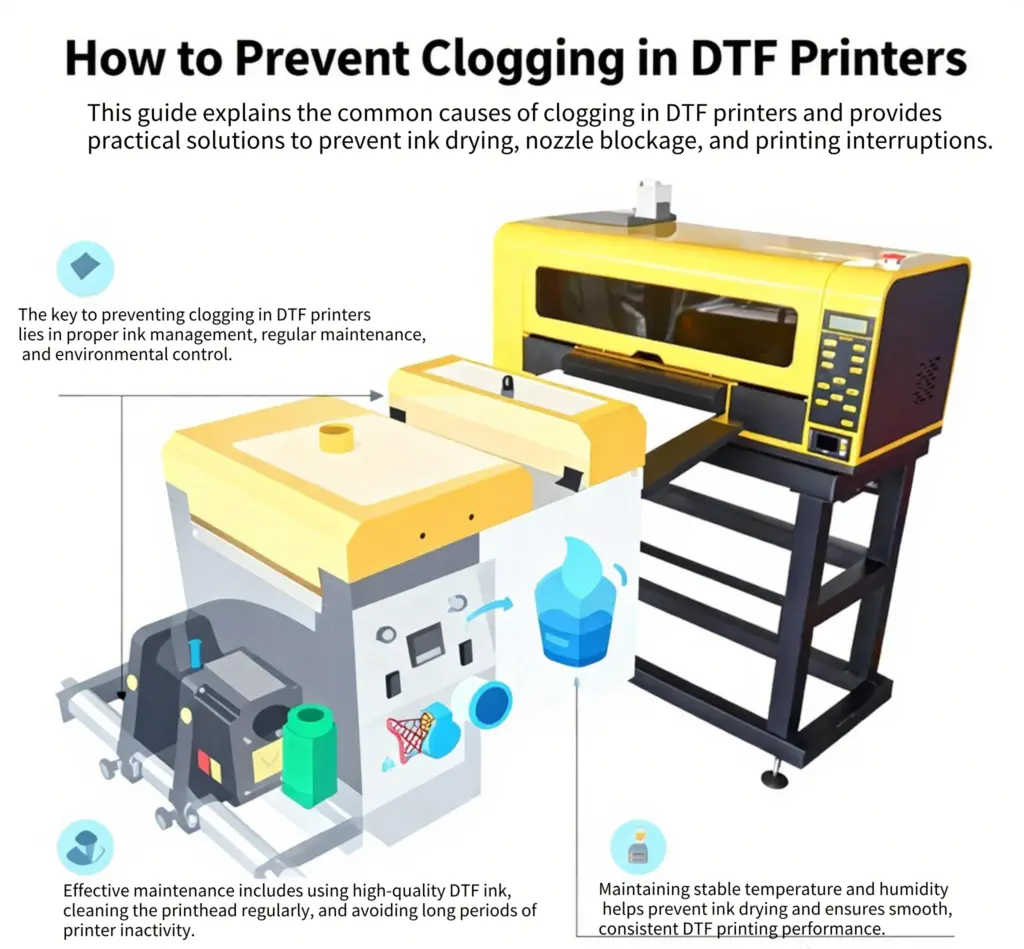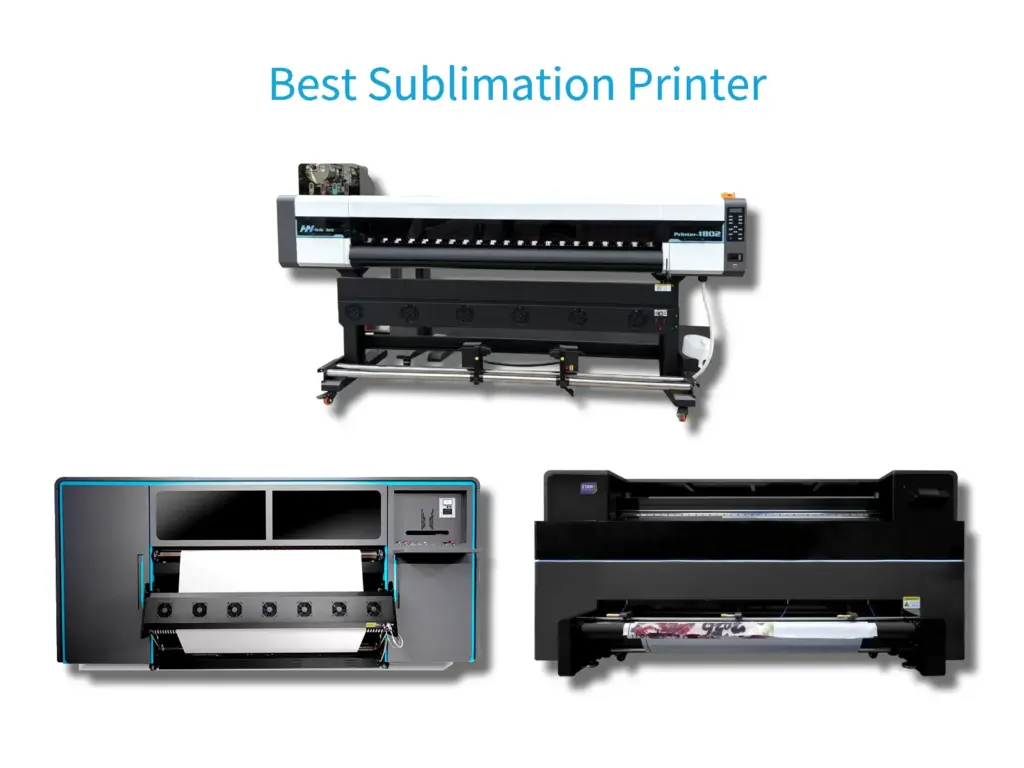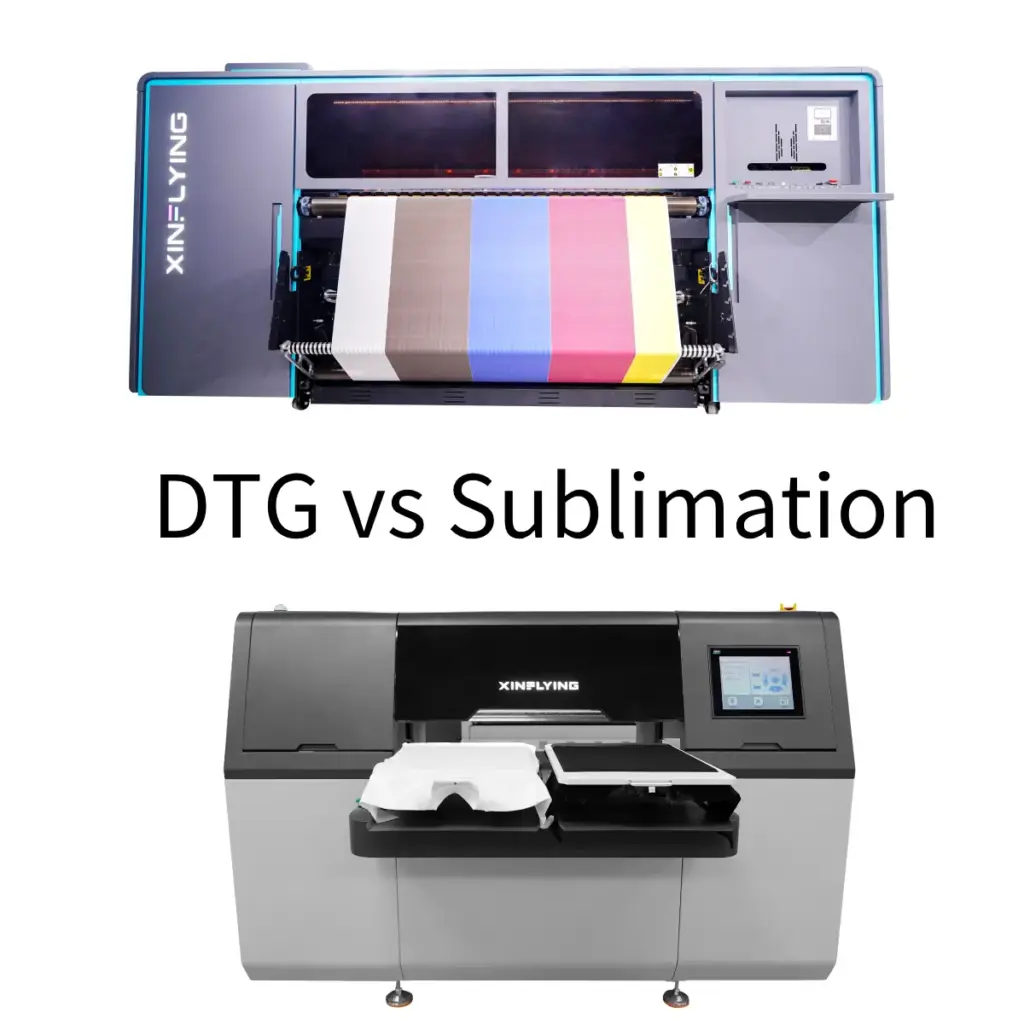आजकल, छोटे स्टूडियो उपभोक्ताओं की जरूरतों को बेहतर ढंग से पूरा करने के लिए प्रिंट-ऑन-डिमांड उत्पादन पसंद करते हैं, तो प्रत्यक्ष-से-गारमेंट (डीटीजी) और डायरेक्ट-टू-फ़िल्म या फिल्म-टू-गारमेंट (डीटीएफ) मुद्रण ने उन निर्माताओं का ध्यान आकर्षित किया है जो व्यक्तिगत कपड़ों और छोटे प्रस्तुतियों के साथ आगे बढ़ना चाहते हैं.
सर्वप्रथम, DTG प्रिंटिंग टी-शर्ट प्रिंटिंग और छोटे प्रोडक्शंस के लिए मुख्य दृष्टिकोण है, अब DTF प्रिंटिंग प्रचलन में है. वे दोनों छोटी वस्तुओं और निजीकरण के लिए उपयुक्त हैं, जैसे मास्क या टी-शर्ट. तथापि, उनकी कामकाजी प्रक्रिया और परिणाम अलग -अलग हैं, इसलिए कंपनियों के लिए उनमें से एक को चुनने में संकोच हो सकता है. यहाँ इन दो मुद्रण विधियों का एक संक्षिप्त परिचय है.
DTG प्रिंटिंग क्या है
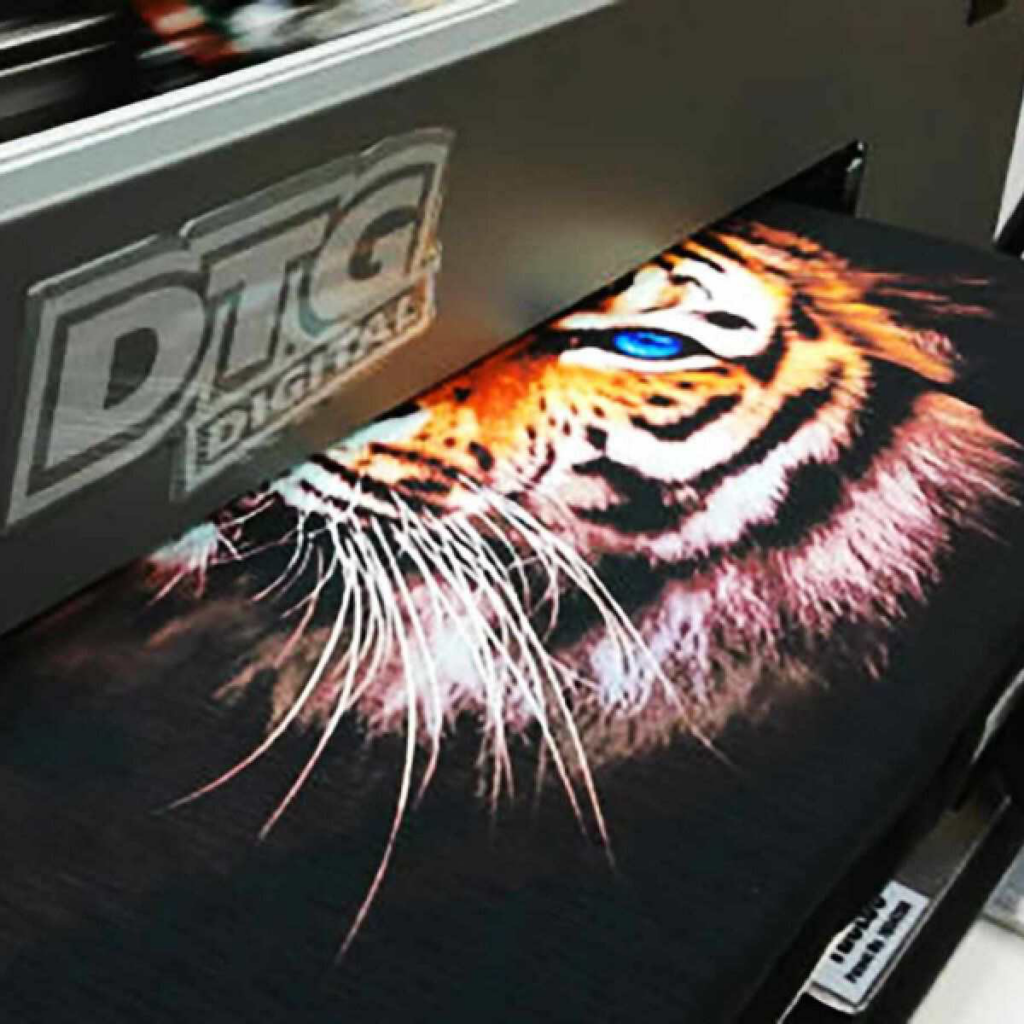
स्रोत: Pinterest
परिचय
डायरेक्ट-टू-परिधान (डीटीजी) मुद्रण कपड़े पर एक तरह की डिजिटल मुद्रण है. एक डिज़ाइन को पहले सिस्टम में डिजिटाइज़ किया जाना चाहिए, इससे पहले कि वह रेखापुंज छवि प्रोसेसर द्वारा मुद्रण निर्देशों के एक सेट में परिवर्तित हो जाए (फाड़ना) सॉफ़्टवेयर.
DTG प्रिंटर कैसे काम करता है?
DTG प्रिंटिंग की कार्य प्रक्रिया में मुख्य रूप से चार चरण होते हैं. पहला कदम एक विशेष समाधान के साथ कपड़े के पूर्व-उपचार के साथ शुरू होता है. यह कदम पूरा होना चाहिए क्योंकि हम सीधे कपड़े पर काम करेंगे. ऐसा करके, स्याही को ठीक से तय किया जाएगा और कपड़े के माध्यम से स्थानांतरित करने से रोका जाएगा।दूसरा चरण हीटिंग है. मुद्रण से पहले पूर्व-उपचार को सक्रिय करने के लिए कपड़े को गर्म करने की आवश्यकता है.
इसके बाद, कपड़े को प्रिंटर के प्लेटेन पर रखा जाता है और ठीक से संरेखित किया जाता है. DTG प्रिंटिंग के साथ, आप सीधे तीसरे चरण में स्थानांतरित किए बिना कपड़े पर ग्राफिक को प्रिंट कर सकते हैं, तो प्रक्रिया DTF प्रिंटिंग की तुलना में कम होगी. हम यह गारंटी देने के लिए एक आधार के रूप में एक सफेद मास्क को लागू करने का विकल्प चुन सकते हैं कि स्याही इस तथ्य के बावजूद मीडिया के रंग के साथ मिश्रण नहीं करती है कि यह सफेद ठिकानों पर अनावश्यक है. कुछ स्थानों पर सफेद लागू करके सफेद मास्क के उपयोग को कम करना भी संभव है. उपरोक्त प्रक्रिया के समापन के बाद, स्याही को ठीक करने के लिए एक अंतिम प्रेस की आवश्यकता होगी, और फिर कपड़े सभी सेट हो जाएंगे. DTG प्रिंटिंग की प्रक्रिया में दो गर्मी उपचार शामिल हैं, इसलिए एक उपयुक्त चुनना महत्वपूर्ण है उर्ध्वपातन मुद्रण मशीन निर्माता मुद्रण के लिए.
कपड़े के प्रकारों के लिए उपयुक्त
DTG मुद्रण की प्रक्रिया में, पिगमेंट स्याही को कपड़े से बंधने के लिए गर्मी से दबाया जाना चाहिए, जो सभी कपड़ों के साथ संगत होना मुश्किल है. इसलिए, यह विधि कपड़ों के एक विशेष स्पेक्ट्रम तक सीमित है, उदाहरण के लिए, कपास, कार्बनिक कपास, कंघी कपास, और लिनन, क्योंकि पानी-आधारित स्याही जल्दी और स्थायी रूप से कपड़े के साथ एकीकृत हो सकते हैं. स्याही के लिए जलरोधी गुणों के साथ सब्सट्रेट का पालन करना कठिन है पॉलिएस्टर. DTG प्रिंटर कंपनी अत्याधुनिक डायरेक्ट-टू-गारमेंट प्रिंटिंग सिस्टम के साथ एक अच्छी कीमत पर अनुकूलित टी-शर्ट पर पूर्ण-रंग प्रिंट प्रदान कर सकते हैं.
डीटीएफ प्रिंटिंग क्या है?
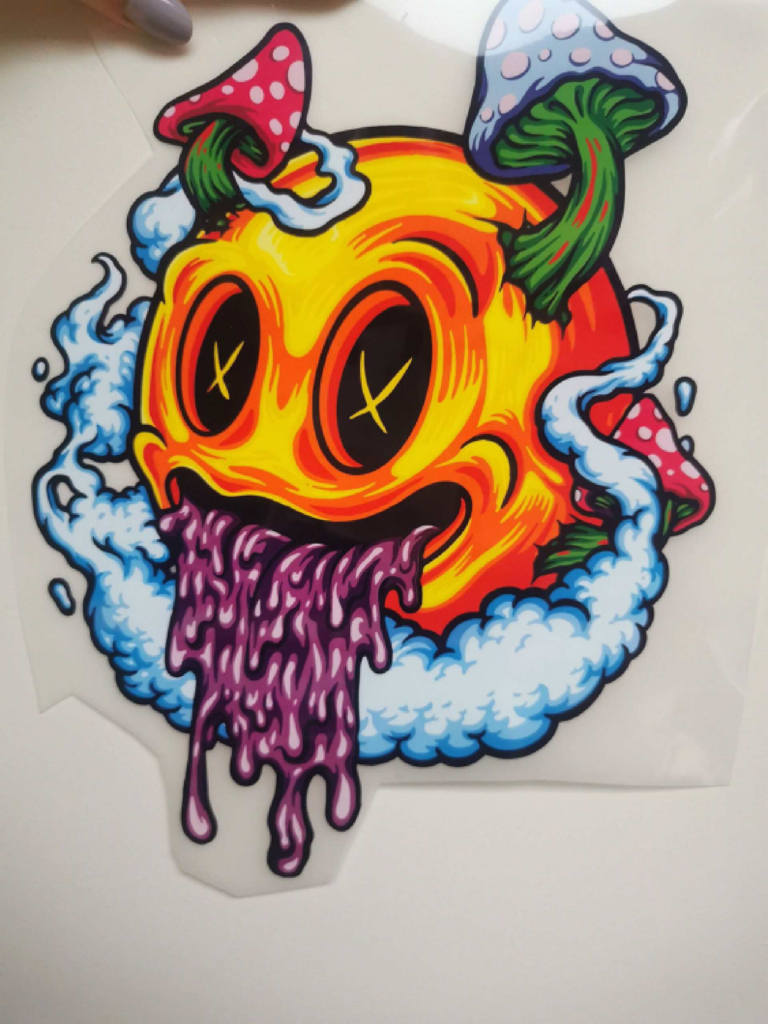
स्रोत: Pinterest
परिचय
DTG और DTF प्रिंटिंग दोनों एक समान तरीके से कपड़े पर ग्राफिक्स प्रिंट करने के लिए डिजिटल इंकजेट तकनीक का उपयोग करते हैं. सबसे बड़ा अंतर यह डायरेक्ट-टू-फ़िल्म या फिल्म-टू-गारमेंट है (डीटीएफ) प्रिंटिंग एक ट्रांसफर फिल्म के आधार पर कपड़े पर पैटर्न को प्रिंट करता है.
DTF प्रिंटर कैसे काम करता है?
एक DTF प्रिंटर की कार्य प्रक्रिया एक DTG प्रिंटर से अलग है. सबसे पहले, DTF प्रिंटिंग के लिए परिधान को पूर्व-उपचार करने की आवश्यकता नहीं है क्योंकि डिजाइन को एक फिल्म पर पूर्व-मुद्रित किया जाएगा जिसे परिधान पर स्थानांतरित किया जाना चाहिए, जो DTG प्रिंटिंग की तुलना में अधिक समय लेता है. डीटीएफ मुद्रण स्याही यह सुनिश्चित करने के लिए एक महत्वपूर्ण सामग्री है कि DTF प्रिंटर सुचारू रूप से चलता है. जब स्याही को फिल्म पर रखा जाता है, सफेद स्याही की एक परत को अन्य रंग परतों के ऊपर लागू किया जाना चाहिए ताकि यह एक आधार के रूप में काम कर सके जब इसे परिधान पर स्थानांतरित किया जाता है. सफेद स्याही का उपयोग डिजाइन में चमकीले रंगों को संरक्षित करने के लिए एक नींव के रूप में किया जाता है. डीटीएफ प्रिंटिंग फिल्म अर्ध-पारदर्शी गुणों के साथ उच्च तापमान का सामना करने में सक्षम है और इसका उपयोग विभिन्न प्रकार के कपड़ा रंगों या प्रकारों पर स्थानांतरण के लिए किया जा सकता है.
स्याही के ठीक बाद फिल्म पर विशिष्ट पैटर्न के अनुसार मुद्रित किया जाता है, DTF प्रिंटिंग के लिए एक के उपयोग की आवश्यकता होती है चिपकने वाला पाउडर जो फिल्म पर स्याही को सूखने और ठीक करने के लिए एक महत्वपूर्ण सामग्री है. डीटीएफ प्रिंटर पाउडर शुद्ध होने की आवश्यकता है और एक विशेष संबंध प्रभाव है. DTF के लिए स्पष्ट रूप से डिज़ाइन किए गए प्रिंटर पर, चिपकने वाला पाउडर लागू करना पहले से ही प्रिंटर के परिचालन कार्यक्रम में शामिल है, आपको इसे मैन्युअल रूप से प्रदर्शन करने से बचाना. प्रक्रिया के अंतिम चरण में, मुद्रित फिल्म को लिया जाता है और परिधान में दबाया जाता है.
चीन एक परिधान निर्माण शक्ति है और प्रिंटिंग मशीनों में परिपक्व तकनीक है, तो आप एक चुनने पर विचार कर सकते हैं चीन से DTF प्रिंटर निर्माता.
कपड़े/उत्पाद प्रकारों के लिए उपयुक्त
डीटीएफ प्रिंटिंग के दौरान अत्यधिक गर्मी के साथ कपड़े की संगतता के बारे में चिंतित होना आवश्यक नहीं है क्योंकि पैटर्न वाली फिल्में एक गर्मी-पिघलने के चिपकने के साथ परिधान से जुड़ी हैं. नतीजतन, DTF प्रिंटिंग से निपट सकता है कपास के अलावा किसी भी प्रकार का कपड़ा डीटीजी मुद्रण के साथ तुलना में.
डीटीजी बनाम. व्यावसायिक उपयोग के लिए डीटीएफ प्रिंटर

स्रोत: Pinterest
दोनों प्रकार के मुद्रण विधियां समान विशेषताओं वाले उत्पादों के लिए उपयुक्त हो सकती हैं, फिर भी उनके पास अपने स्वयं के फायदे और नुकसान हैं जो विभिन्न उत्पादन कारकों को ध्यान में रखते हैं. तो निर्णय लेते समय हमें क्या विचार करना चाहिए?
प्रिंटर मूल्य और स्याही की कीमत
DTG प्रिंटर बहुत है महँगा. एक मानक DTG प्रिंटर तक हो सकता है $13,000. यहां तक कि एक एंट्री-लेवल DTG प्रिंटर की लागत हो सकती है $8,000. आपको कुल मिलाकर सभी उपभोग्य सामग्रियों और उपकरणों के लिए एक विशाल निवेश की आवश्यकता हो सकती है.
DTF प्रिंटिंग का सबसे बड़ा फायदा इसका है कम लागत. ट्रांसफर फिल्मों सहित उपभोग्य, चिपकने वाला पाउडर, और प्रिंटर स्याही हैं प्रभावी लागत ताकि व्यय को बचाया जा सके और लाभ को अनुकूलित किया जा सके. आगे, पैसे बचाने के लिए एक ही शीट या फिल्म के रोल पर कई डिज़ाइन छपे हो सकते हैं.
दोनों मुद्रण विधियों में सफेद स्याही की एक बड़ी मात्रा की आवश्यकता होती है जो आश्चर्यजनक रूप से महंगी है, तथापि, सक्षम रिप सॉफ्टवेयर का उपयोग करने से यह समायोजित करने के लिए संभव हो जाता है कि आधार रंग के आधार पर डीटीजी में कितनी सफेद स्याही डाल दी जाती है और खर्चों को काफी बचाता है. उदाहरण के लिए, Neostampa DTG के लिए एक अनूठा प्रिंट मोड है जो न केवल आपको रंगों को जल्दी से कैलिब्रेट करने देता है, लेकिन यह भी समायोजित करें कि विभिन्न प्रकार के कपड़ों पर कितनी सफेद स्याही का उपयोग करना है.
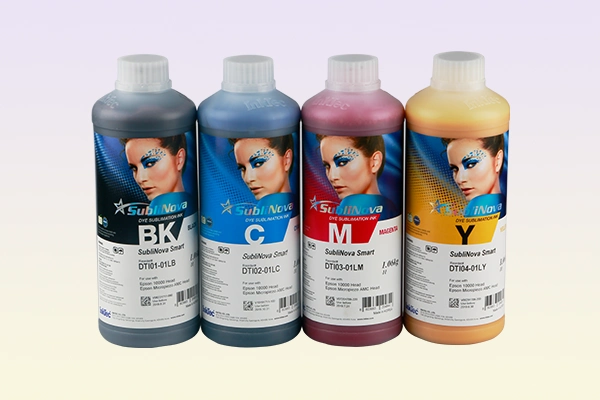
DTG प्रिंटिंग हल्के कपड़ों पर सफेद स्याही के उपयोग को कम कर सकती है लेकिन गहरे कपड़े पर सफेद स्याही के उपयोग को बढ़ा सकती है, तो इसकी स्याही की लागत निर्भर करती है. तथापि, DTF प्रिंटिंग एक फिल्म के माध्यम से ग्राफिक को परिधान में स्थानांतरित करता है, तो स्याही की मात्रा अलग -अलग नहीं होगी और इसकी लागत हल्के कपड़े या गहरे कपड़े के लिए समान है.
आपके उत्पाद की किस्में
DTG प्रिंटर और DTF प्रिंटर के बीच मुद्रण प्रभाव काफी अलग है. DTG मुद्रण में, ड्राइंग और स्याही कपड़े के साथ मिलाया जाता है और इसलिए एक मोटे और अधिक आधार की तरह महसूस होता है, लेकिन यह कपास के नरम हैंडल को रख सकता है. अलावा, कपड़े भी यथासंभव सांस ले सकते हैं. जबकि DTF प्रिंटिंग में, फिक्सिंग पाउडर के कारण टी-शर्ट का ग्राफिक प्लास्टिक और शिनियर दिखता है, और इसके चित्र कपड़े के साथ कम संयुक्त हैं. नतीजतन, चित्र रंगों में उच्च गुणवत्ता वाला दिखता है क्योंकि रंग आधार रंग से प्रभावित नहीं होते हैं.
DTG का उपयोग केवल कपास पर प्रिंट करने के लिए किया जा सकता है, लेकिन DTF का उपयोग विभिन्न प्रकार की सामग्रियों पर प्रिंट करने के लिए किया जा सकता है. यदि आप चाहते हैं कि किसी भी कपड़े या कपड़ों के आइटम पर प्रिंट करने के लिए अनुकूलन क्षमता एक बेहतर विकल्प हो सकता है. इसके अलावा, स्थानांतरण फिल्मों को अन्य छोटी चीजों पर लागू किया जा सकता है, जैसे कप, थर्मस फ्लास्क, और साइनबोर्ड. आप परामर्श के बाद अधिक संभावनाओं की कोशिश कर सकते हैं डीटीएफ प्रिंटर आपूर्तिकर्ता.
दोनों DTG और DTF प्रिंटिंग CMYK का उपयोग करते हैं (सियान, मैजेंटा, पीला, काला) एक भौतिक माध्यम पर रंग जीवंतता देने के लिए. वे कपड़े पर अच्छे रंग सम्मिश्रण गुण हो सकते हैं और ग्राफिक में ढाल परिवर्तन और सूक्ष्म अंतर को डुप्लिकेट कर सकते हैं.
मात्रा & उत्पादकता

स्रोत: Pinterest
DTG प्रिंटिंग प्रिंट्स डिज़ाइन लाइन लाइन बाय लाइन, यह है और धीमा मुद्रण विकल्प. एक प्रवेश-स्तर DTG प्रिंटर के साथ, आप प्रिंट कर सकते हैं 20 प्रति घंटे टी-शर्ट, शर्ट के पूर्व-उपचार को छोड़कर. जब DTG प्रिंटिंग मशीन सभी एक दुकान में सेट की जाती हैं, दो की एक टीम मुद्रण और उत्पादन की पूरी प्रक्रिया को पूरा कर सकती है 6-7 प्रति घंटे शर्ट.
सबसे बड़ा लाभ DTG प्रिंटिंग एक तेजी से मुद्रण की गति से विभिन्न प्रकार के रंगों में जटिल ग्राफिक्स का उत्पादन करने की क्षमता है. इसकी तैयारी का समय कम है. यदि आपने कपड़ों का दिखावा किया है और उन्हें हीट प्रेस प्राप्त करें, फिर आप उन्हें लाइन कर सकते हैं और मुद्रण शुरू कर सकते हैं. यह प्रिंटिंग विधि छोटे पैमाने पर ग्राहकों के साथ अच्छी तरह से काम करती है जो कम ऑर्डर करते हैं 30 अनुकूलित प्रिंट के साथ शर्ट.
यदि आप अच्छे रंगों और एक छोटे से निवेश के साथ उत्पाद चाहते हैं, तो DTF छोटे पैमाने पर छपाई के लिए अधिक उपयुक्त हो सकता है. इसके विपरीत, DTG में अब विभिन्न प्रकार के प्लेटों और प्रक्रियाओं के साथ अधिक अनुकूलनीय प्रिंटिंग उपकरण शामिल हैं, के लिए अनुमति देना तेज और अधिक लचीला मुद्रण. एक एकल स्थानांतरण फिल्म पर कई ग्राफिक्स मुद्रित किए जा सकते हैं, जो बहुत सारे उत्पादन समय को कम करता है. मुद्रित फिल्मों को अभी भी मैन्युअल रूप से काटने और अलग करने की आवश्यकता है, लेकिन DTG मशीनें बड़े और तेज आउटपुट की अनुमति देती हैं और DTF की तुलना में कहीं अधिक बहुमुखी हैं. इसलिए, प्रत्येक फर्म के उत्पादन पैमाने को समझना महत्वपूर्ण है.
निष्कर्ष
यहां हम आपको DTG और DTF प्रिंटिंग और उनके अंतर की मुख्य कार्य प्रक्रिया पर जानकारी देते हैं. हालांकि DTF प्रिंटिंग DTG प्रिंटिंग को पार करने के लिए प्रकट होता है, उनके पास असमान कार्य और अनुप्रयोग हैं. निष्कर्ष के तौर पर, आप चुन सकते हैं डिजिटल कपड़ा प्रिंटर निर्माता यह आपकी लागत के लिए सबसे उपयुक्त है, उत्पाद की वेराइटी, और मात्रा. उपरोक्त परिचय आपके निर्णय लेने में सहायता कर सकता है और एक व्यापक परिप्रेक्ष्य प्रदान कर सकता है.


